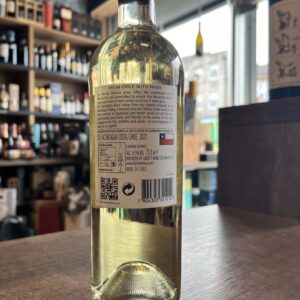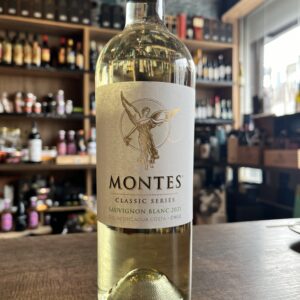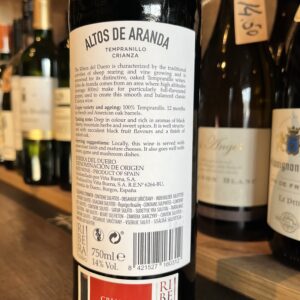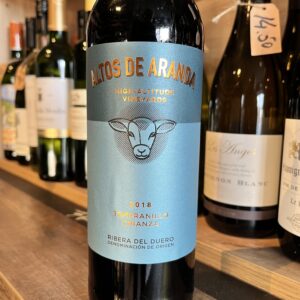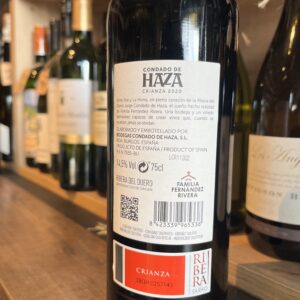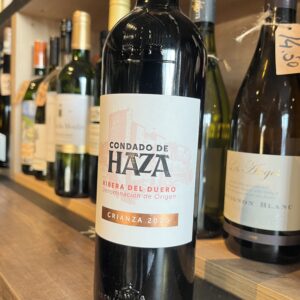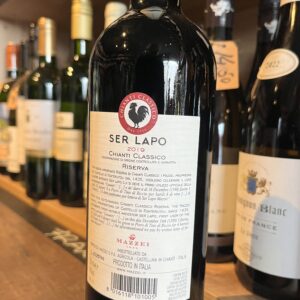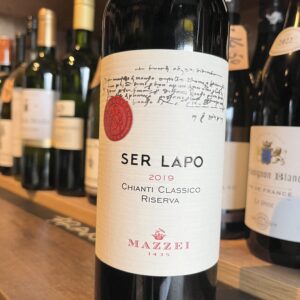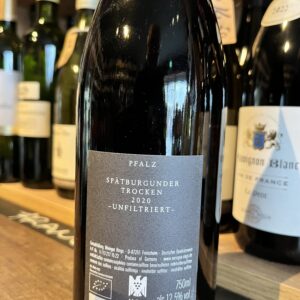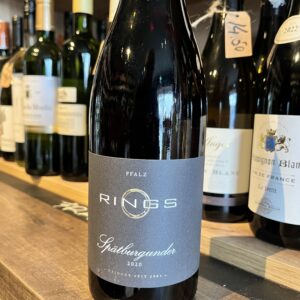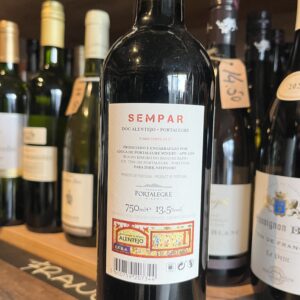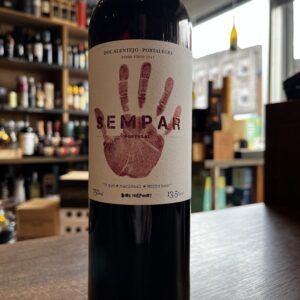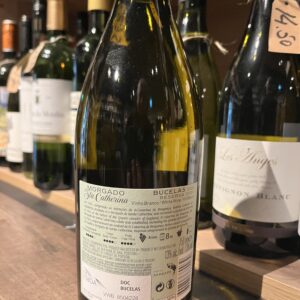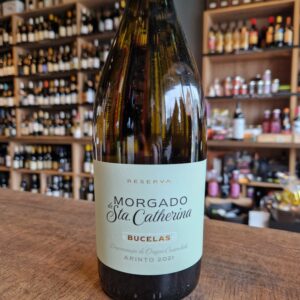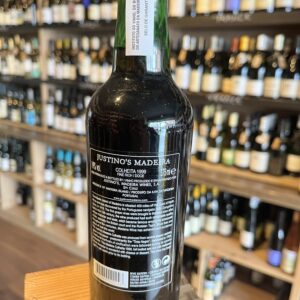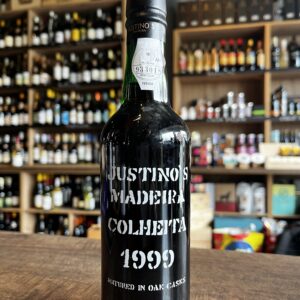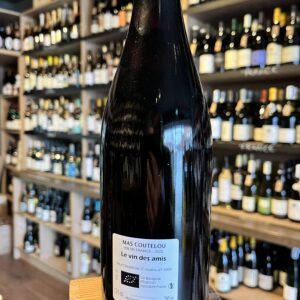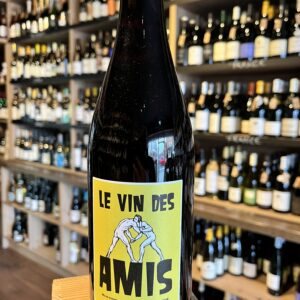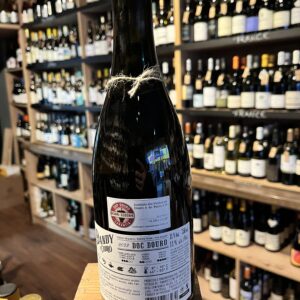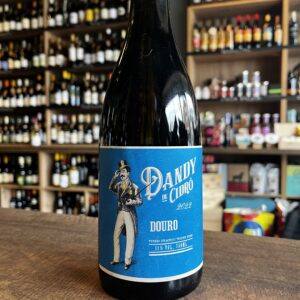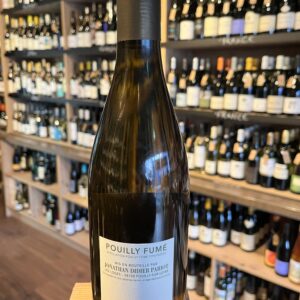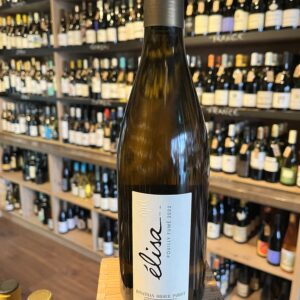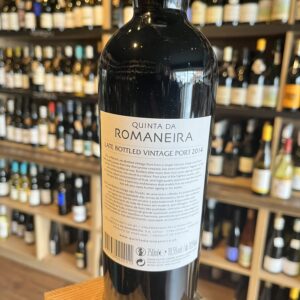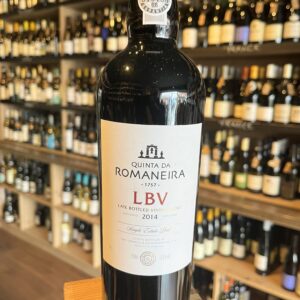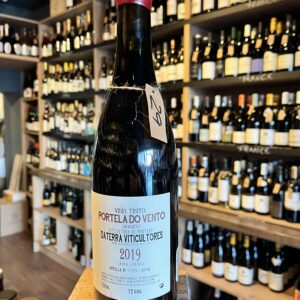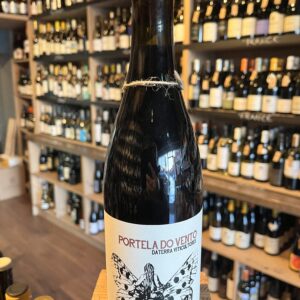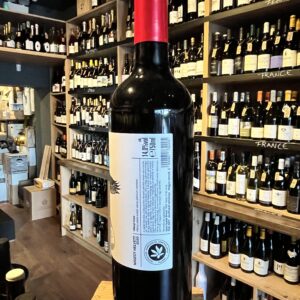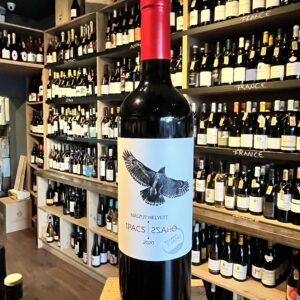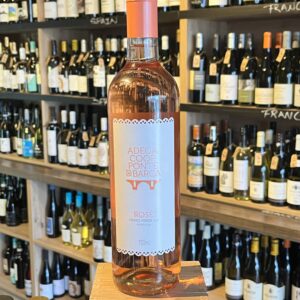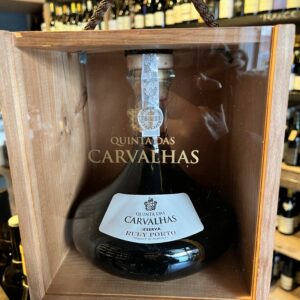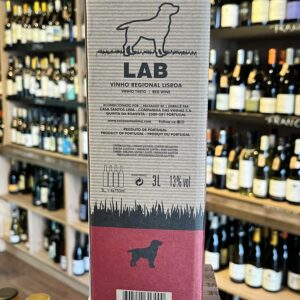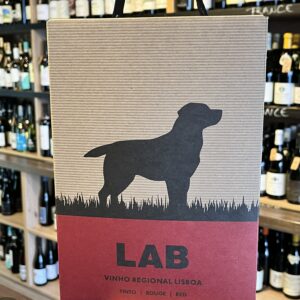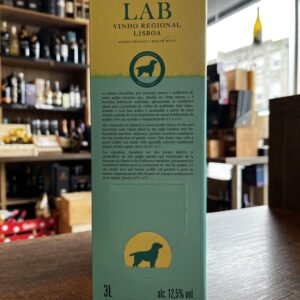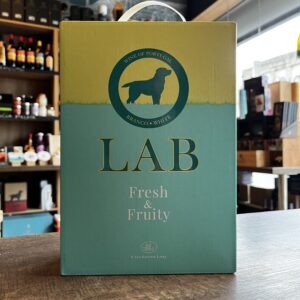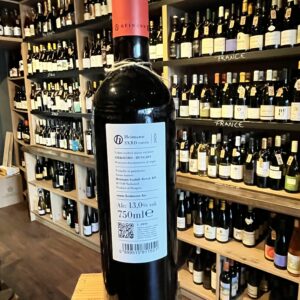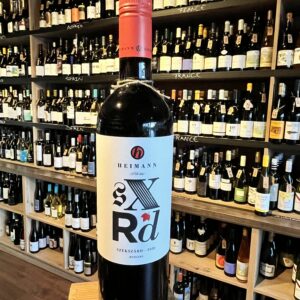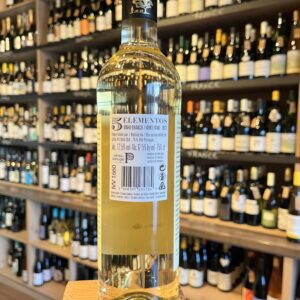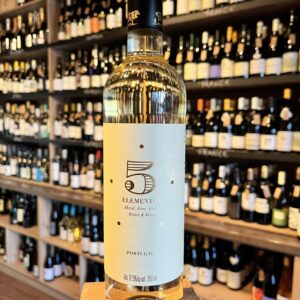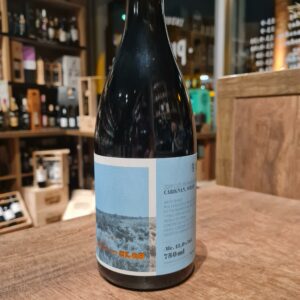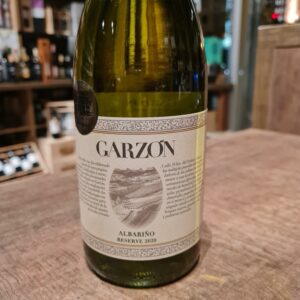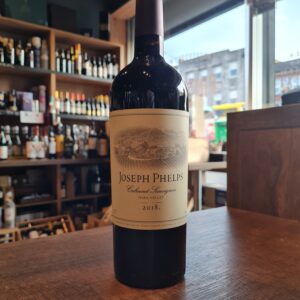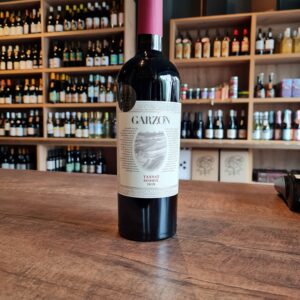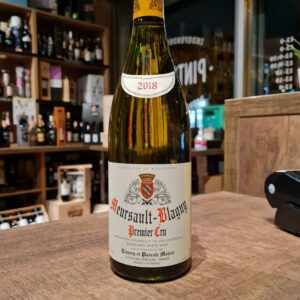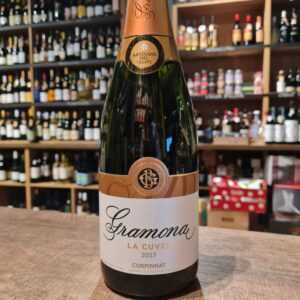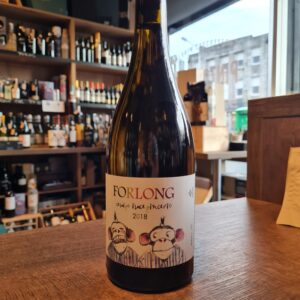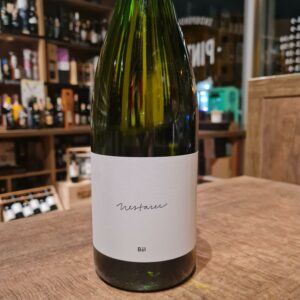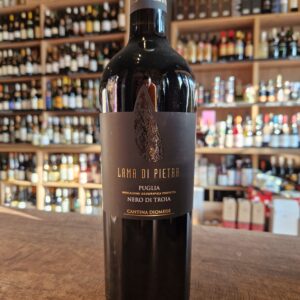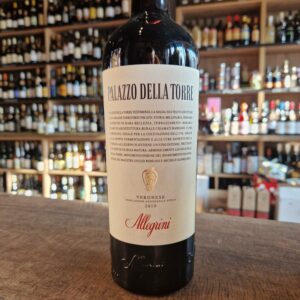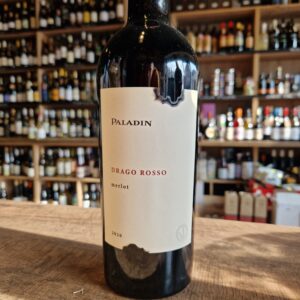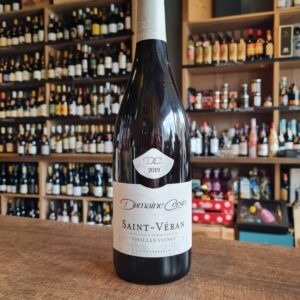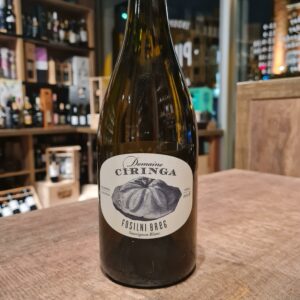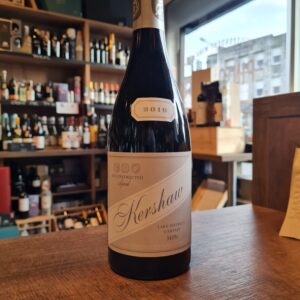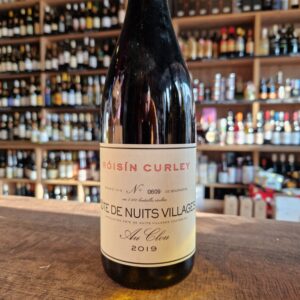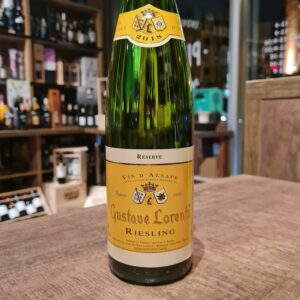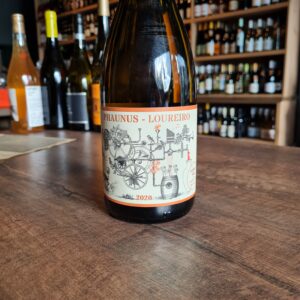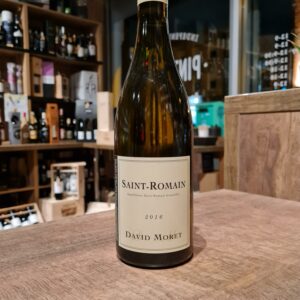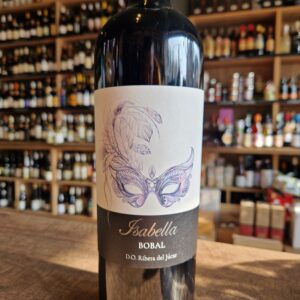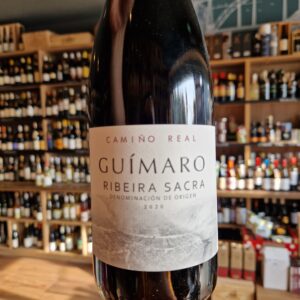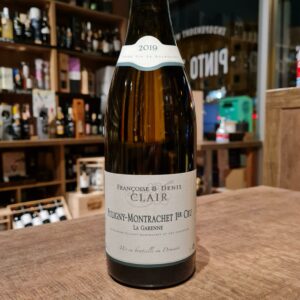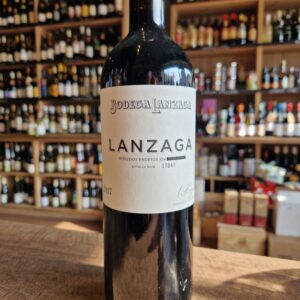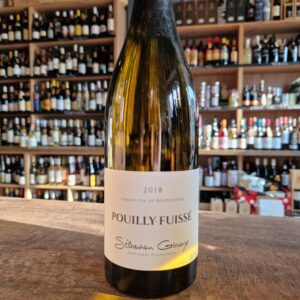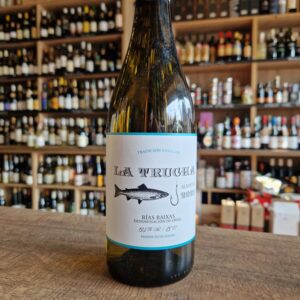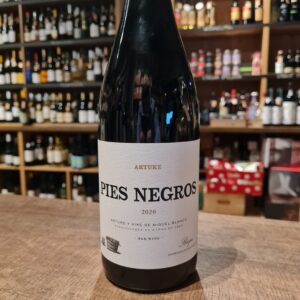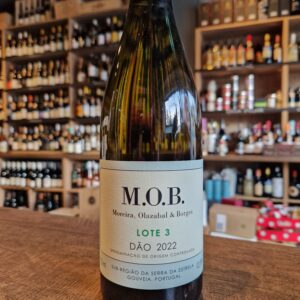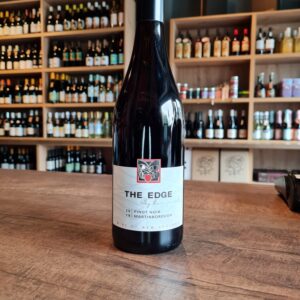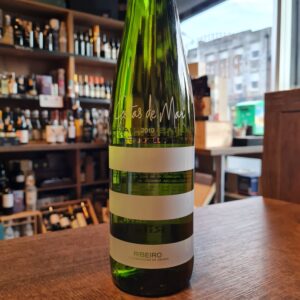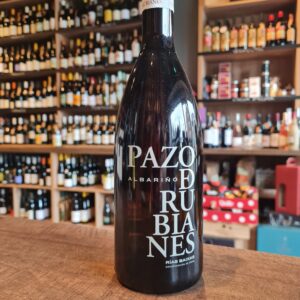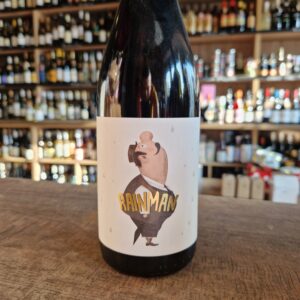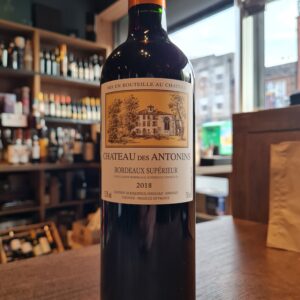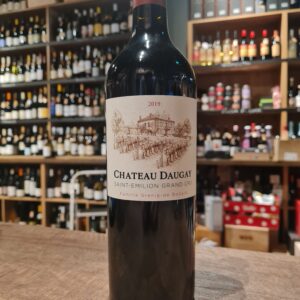-
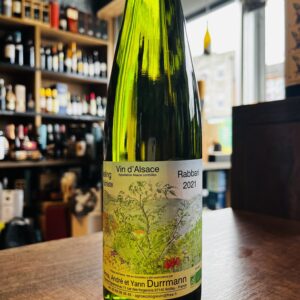 This wine is imported directly and only for Pinto Wines Riesling on Schist makes its terroir apparent with a livewire acidity and snap, rocky, chalky and mineral. Low yielding parcels. Long and driving, a little structure from 2022. The Durrmann family are making wine from their old family house in the middle of Andlau, a beautiful village nestled on the first slopes of the Vosges mountains south-west of Strasbourg. With a surface of only 1,5 hectare at the beginning in 1979, the domaine gradually reached a total surface of seven hectares after André decided to move back to farming and pieced it together from abandoned vineyard sites that were hard to work and no longer commercially viable, coming from his grandfather who made shoes to supplement the farm income. This lack of an established and family-based wine making tradition initially presented a weakness because the whole business had to be built, but it is also a strength because the company wasn’t limited to traditional customs, and therefore has always been oriented toward innovation. The vineyards are now scattered on about 30 spots around the village. They added parcels progressively when opportunities showed up and looked also for different soil qualities so that the cuvées express several terroirs. The Durrmans think that the quality of the wine is created by the work in the vineyard, that’s why their objective is its preservation. The wines are being disturbed as little as possible. They do not add any oenological product to change the natural taste of the wines. The production is partly vinified in inox tank and partly in old wooden casks. Son Yann has worked in the domaine since he was a child and officially took over the running of the business a year ago. André was among the first wave of organic winemakers in Alsace converting in 1998, Yann has then taken this a step further applying a more natural approach in the cellar. Selected cuvées are produced without sulfur addition since 2007. The Durrmanns are true eco warriors only having electric cars and using solar energy for hot water and heating. Pair it with Pork, Seafood, Curries, Spicy dishes
This wine is imported directly and only for Pinto Wines Riesling on Schist makes its terroir apparent with a livewire acidity and snap, rocky, chalky and mineral. Low yielding parcels. Long and driving, a little structure from 2022. The Durrmann family are making wine from their old family house in the middle of Andlau, a beautiful village nestled on the first slopes of the Vosges mountains south-west of Strasbourg. With a surface of only 1,5 hectare at the beginning in 1979, the domaine gradually reached a total surface of seven hectares after André decided to move back to farming and pieced it together from abandoned vineyard sites that were hard to work and no longer commercially viable, coming from his grandfather who made shoes to supplement the farm income. This lack of an established and family-based wine making tradition initially presented a weakness because the whole business had to be built, but it is also a strength because the company wasn’t limited to traditional customs, and therefore has always been oriented toward innovation. The vineyards are now scattered on about 30 spots around the village. They added parcels progressively when opportunities showed up and looked also for different soil qualities so that the cuvées express several terroirs. The Durrmans think that the quality of the wine is created by the work in the vineyard, that’s why their objective is its preservation. The wines are being disturbed as little as possible. They do not add any oenological product to change the natural taste of the wines. The production is partly vinified in inox tank and partly in old wooden casks. Son Yann has worked in the domaine since he was a child and officially took over the running of the business a year ago. André was among the first wave of organic winemakers in Alsace converting in 1998, Yann has then taken this a step further applying a more natural approach in the cellar. Selected cuvées are produced without sulfur addition since 2007. The Durrmanns are true eco warriors only having electric cars and using solar energy for hot water and heating. Pair it with Pork, Seafood, Curries, Spicy dishes -
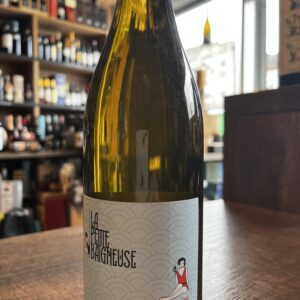 On the border between Roussillon and Corbières, in the heart of the Maury appellation, is the Domaine de la Petite Baigneuse . Philippe Wies, accompanied by his wife Céline, settled at the end of the 2000s, on the superb Maury shale terroirs, at an altitude of 350 meters with breathtaking views of the big blue sea. Surrounded by scrubland and protected by an environment of cliffs, the 14 hectares of vines benefit from a Mediterranean climate tempered by the wind and maritime inlets. Organic since the beginning of the adventure, the Petite Baigneuse estate also practices biodynamics and only works the soil very little. Some plowing is then carried out with a tractor and a tracker so as not to overturn the horizons. Not far from Calce's friends in the people of La Nouvelle Donne , and Domaine Jean-Philippe Padié , Philippe Wies is today an essential figure in the world of natural wines in the south of France. "Juste Ciel", a wine that calls for summer, fresh grilled fish, marinated supions, sea urchins, carpaccio de Saint Jacques.... In short, "La Petite Baigneuse" delivers here a wine to be enjoyed by the poolside with a Mediterranean meal thanks to its delicacy, its freshness and its notes of candied fruits. A very nice white wine to share with a nice meal.
On the border between Roussillon and Corbières, in the heart of the Maury appellation, is the Domaine de la Petite Baigneuse . Philippe Wies, accompanied by his wife Céline, settled at the end of the 2000s, on the superb Maury shale terroirs, at an altitude of 350 meters with breathtaking views of the big blue sea. Surrounded by scrubland and protected by an environment of cliffs, the 14 hectares of vines benefit from a Mediterranean climate tempered by the wind and maritime inlets. Organic since the beginning of the adventure, the Petite Baigneuse estate also practices biodynamics and only works the soil very little. Some plowing is then carried out with a tractor and a tracker so as not to overturn the horizons. Not far from Calce's friends in the people of La Nouvelle Donne , and Domaine Jean-Philippe Padié , Philippe Wies is today an essential figure in the world of natural wines in the south of France. "Juste Ciel", a wine that calls for summer, fresh grilled fish, marinated supions, sea urchins, carpaccio de Saint Jacques.... In short, "La Petite Baigneuse" delivers here a wine to be enjoyed by the poolside with a Mediterranean meal thanks to its delicacy, its freshness and its notes of candied fruits. A very nice white wine to share with a nice meal. -
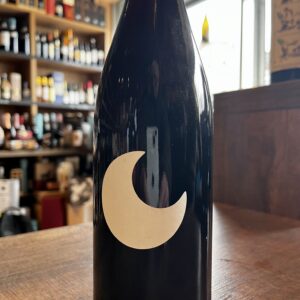
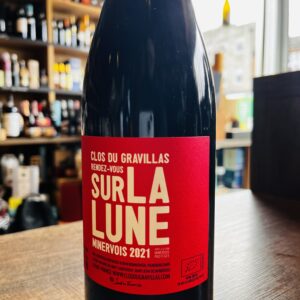 This Sur La Lune from Le Clos du Gravillas is a dazzling expanse of white limestone pebbles on a plateau at an altitude of 300 meters in the Haut Languedoc Natural Park. Between the gorges of St Chinian and Minerve, surrounded by scrubland and holm oaks, the 8.30 hectare estate is managed with respect for the terroir, in organic farming with concern for the preservation of the biodiversity of fauna and the surrounding flora. This wine comes from 3 plots on the Cazelles plateau: Syrah from a place called “Esperandieu”, a very pretty place surrounded by hills covered with scrubland, almond trees, broom and oaks where they also planted 48 pomegranate trees, 25 fig trees as well as cherry and apricot trees. The 80 year old vine of Carignan planted with Grenache from the place called Carretals and the 40-year-old Carignan vine from the place called Roque de Beau. Serve rather chilled but not too cold, ensuring that the wine does not heat up excessively in the bottle or in the glasses. A slight opening time prior to service may be beneficial.vThis wine beyond all the technicallities and sense of place it is a straight wine without organoleptic deviation, without volatile phenols, pure, with perfect control and ultimately delicious. Slainte!
This Sur La Lune from Le Clos du Gravillas is a dazzling expanse of white limestone pebbles on a plateau at an altitude of 300 meters in the Haut Languedoc Natural Park. Between the gorges of St Chinian and Minerve, surrounded by scrubland and holm oaks, the 8.30 hectare estate is managed with respect for the terroir, in organic farming with concern for the preservation of the biodiversity of fauna and the surrounding flora. This wine comes from 3 plots on the Cazelles plateau: Syrah from a place called “Esperandieu”, a very pretty place surrounded by hills covered with scrubland, almond trees, broom and oaks where they also planted 48 pomegranate trees, 25 fig trees as well as cherry and apricot trees. The 80 year old vine of Carignan planted with Grenache from the place called Carretals and the 40-year-old Carignan vine from the place called Roque de Beau. Serve rather chilled but not too cold, ensuring that the wine does not heat up excessively in the bottle or in the glasses. A slight opening time prior to service may be beneficial.vThis wine beyond all the technicallities and sense of place it is a straight wine without organoleptic deviation, without volatile phenols, pure, with perfect control and ultimately delicious. Slainte! -
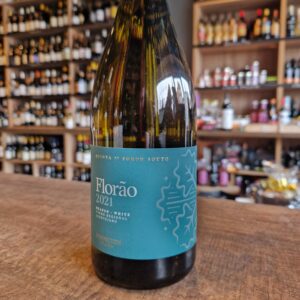 Quinta da Fonte Souto is in the Portalegre subregion of the Alto Alentejo in southern Portugal. Close to the São Mamede range (1,025 metres), the property benefits from the area’s altitude with its cooler microclimate in sharp contrast to the Alentejo region’s typically hot and dry conditions. Yields are low due to the schist and granite soils, which are less fertile than those found in the flat and rolling terrain which characterizes the majority of the Alentejo.
Quinta da Fonte Souto is in the Portalegre subregion of the Alto Alentejo in southern Portugal. Close to the São Mamede range (1,025 metres), the property benefits from the area’s altitude with its cooler microclimate in sharp contrast to the Alentejo region’s typically hot and dry conditions. Yields are low due to the schist and granite soils, which are less fertile than those found in the flat and rolling terrain which characterizes the majority of the Alentejo. -
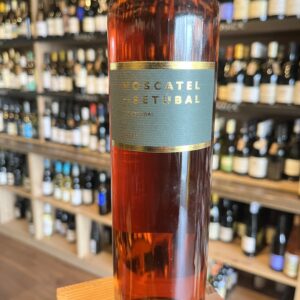
Casa Ermelinda Freitas
The warmth of the Portuguese sun is tempered at Casa Ermelinda thanks to the breezes blowing in from the Atlantic that lies close by. Located at Palmela on the peninsula of Setubal, close to the Sado estuary south of Lisbon, there are currently 440 hectares of many different kinds of vines across the domain, with grapes supplied locally from a further 500ha or so. Head of the company Leonor Freitas has worked tirelessly to make many improvements out in the vineyards and in the winery where modern equipment goes hand in hand with traditional values under the skilled guidance of winemaker Jaime Quendera. Casa Ermelinda Freitas has been run by a long line of dynamic women, celebrating its 100 year anniversary in 2020.
-
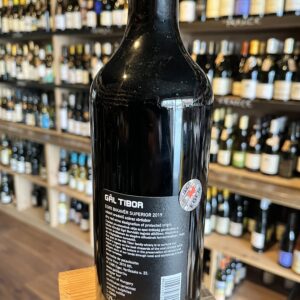
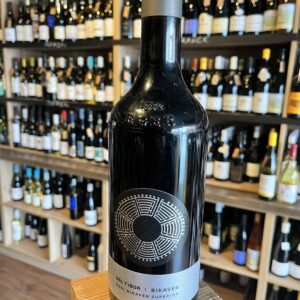 The 1552 Siege of Eger became an emblem of Hungarian heroism when the castle was successfully defended against the united forces of the two greatest Ottoman troops. When accounted for the defeat of their 20-fold army, the Ottoman leaders claimed the Hungarians - including women - fought with such an unparalleled courage they must have had drank the bull’s blood. This gave the name to the region’s emblematic red blend, Egri Bikavér (bull’s blood of Eger). Every bottle is embossed with “1552 Eger". This wine is the truest representation of the legendary Egri Bikavér. Cool climate, volcanic soil with the combination of the best sites in Eger give rise to the fresh, spicy, ripe, vibrant fruits with a touch of leafiness from firm but well integrated, round tannins. Let it explode untamed out of a slightly chilled bottle. The founder of the winery, Tibor Gál was asked by none other than Ludovico Antinori himself to join Ornellaia in 1989 where he soon became the chief winemaker. One of his greatest achievements was the 1998 Ornellaia which was voted best wine in the world by Wine Spectator in 2001. Meanwhile Marchese Incisa della Rocchetta, the man behind Sassicaia, partnered with Gál and together they founded their winery in Eger. Tibor Gál jnr. is in charge today with no less talent. His Bikavér blends are the most honest representations of the volcanic terroir of Eger. Vibrancy, elegance and finesse define the identity of all his wines. I am sure his dad would have been extremely proud to have seen his son become the pioneer of a new era of Egri Bikavér.
The 1552 Siege of Eger became an emblem of Hungarian heroism when the castle was successfully defended against the united forces of the two greatest Ottoman troops. When accounted for the defeat of their 20-fold army, the Ottoman leaders claimed the Hungarians - including women - fought with such an unparalleled courage they must have had drank the bull’s blood. This gave the name to the region’s emblematic red blend, Egri Bikavér (bull’s blood of Eger). Every bottle is embossed with “1552 Eger". This wine is the truest representation of the legendary Egri Bikavér. Cool climate, volcanic soil with the combination of the best sites in Eger give rise to the fresh, spicy, ripe, vibrant fruits with a touch of leafiness from firm but well integrated, round tannins. Let it explode untamed out of a slightly chilled bottle. The founder of the winery, Tibor Gál was asked by none other than Ludovico Antinori himself to join Ornellaia in 1989 where he soon became the chief winemaker. One of his greatest achievements was the 1998 Ornellaia which was voted best wine in the world by Wine Spectator in 2001. Meanwhile Marchese Incisa della Rocchetta, the man behind Sassicaia, partnered with Gál and together they founded their winery in Eger. Tibor Gál jnr. is in charge today with no less talent. His Bikavér blends are the most honest representations of the volcanic terroir of Eger. Vibrancy, elegance and finesse define the identity of all his wines. I am sure his dad would have been extremely proud to have seen his son become the pioneer of a new era of Egri Bikavér. -
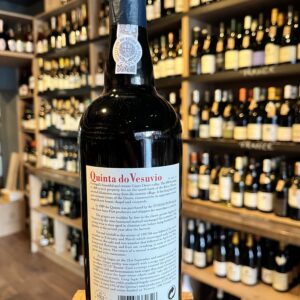
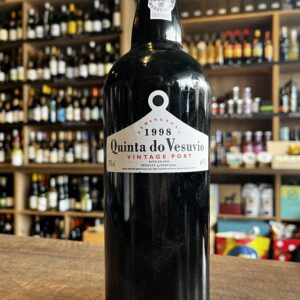 A Vintage Port is only declared in years of exceptional quality. Quinta do Vesuvio is arguably the most magnificent estate in the Douro valley. Located in the beautiful and austere Port-growing region of the Upper Douro valley, its history dates back to the 16th Century. “The quinta of all quintas – one of the wonders of the world”. At Vesuvio, the work of man and the work of nature achieve a perfect and enduring harmony. More than anywhere else in the Douro it has a haunting and enchanting beauty; when you leave it, you take with you a sense of the place that does not fade with time.
A Vintage Port is only declared in years of exceptional quality. Quinta do Vesuvio is arguably the most magnificent estate in the Douro valley. Located in the beautiful and austere Port-growing region of the Upper Douro valley, its history dates back to the 16th Century. “The quinta of all quintas – one of the wonders of the world”. At Vesuvio, the work of man and the work of nature achieve a perfect and enduring harmony. More than anywhere else in the Douro it has a haunting and enchanting beauty; when you leave it, you take with you a sense of the place that does not fade with time. -
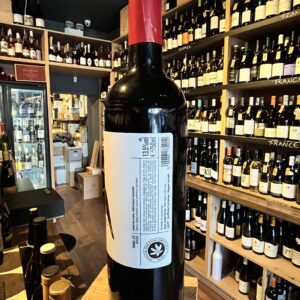
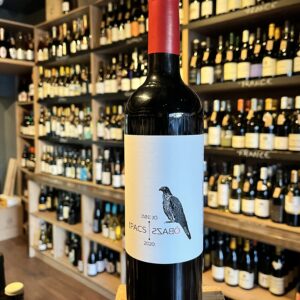 Those who have tasted this wine know that the ‘simplicity’ of its name is about a philosophy, a family story; yet the wine is seriously complex. A blend of Cabernet Franc and Kékfrankos aged in small barrels – You can expect a seriously complex and rich red wine, while its velvety juiciness and ripe fruitiness really make it dangerously good to drink! 'Inni Jó' translates to 'Drinking is Good' "My younger son Vencel tasted a sip and said, it feels good to drink, then my eldest, Vince, pondered on ‘Drinking is good!’ – so my three-year-old instinctively articulated the essence we all have been working towards for generations." - Ipacs tells the story behind the label.
Those who have tasted this wine know that the ‘simplicity’ of its name is about a philosophy, a family story; yet the wine is seriously complex. A blend of Cabernet Franc and Kékfrankos aged in small barrels – You can expect a seriously complex and rich red wine, while its velvety juiciness and ripe fruitiness really make it dangerously good to drink! 'Inni Jó' translates to 'Drinking is Good' "My younger son Vencel tasted a sip and said, it feels good to drink, then my eldest, Vince, pondered on ‘Drinking is good!’ – so my three-year-old instinctively articulated the essence we all have been working towards for generations." - Ipacs tells the story behind the label. -
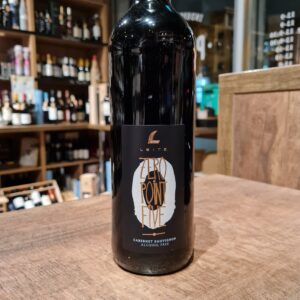 Eins-Zwei-Zero is a premium range of non-alcoholic wines created by award-winning winemaker Johannes Leitz. Using 100% Cabernet Sauvignon grapes from Argentina, these wines are produced with great attention to detail. The alcohol is removed through gentle vacuum distillation at low temperatures, allowing the natural flavours and delicate aromas to be preserved.
Eins-Zwei-Zero is a premium range of non-alcoholic wines created by award-winning winemaker Johannes Leitz. Using 100% Cabernet Sauvignon grapes from Argentina, these wines are produced with great attention to detail. The alcohol is removed through gentle vacuum distillation at low temperatures, allowing the natural flavours and delicate aromas to be preserved. -
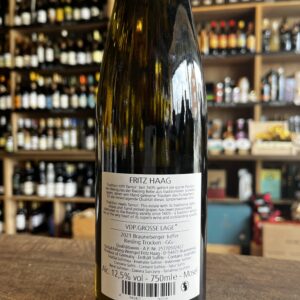
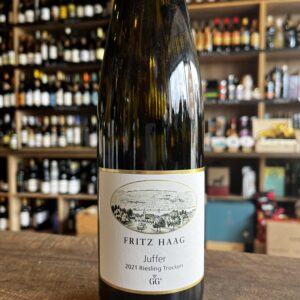 The historic Fritz Haag wine estate is located in the heart of the central Mosel River Valley. The earliest documentation of the estate dates back to 1605. At that time, the village in which it is situated was known as “Dusemond.” In 1925, this village was renamed “Brauneberg” (“brown mountain,” a reference to the color of the slate soil in this area of the Mosel) in an endeavor to further promote the reputation of its world-renowned vineyards “Brauneberger Juffer” and “Brauneberger Juffer Sonnenuhr.” Like all the top Mosel producers, Fritz Haag produces a range of wines including some very rich, late harvest dessert wines. These wines put the region on the map for luxury wine in the 17 and 1800s, making some Mosel Riesling more pricey and coveted than first growth Bordeaux. But in truth the wines that the locals drank, especially in the summer, were generally off dry to completely bone dry. Fritz Haag's vineyards sit along the slopes of the Brauneberger hill and the vineyards of Juffer and Juffer Sonnenuhr. Brauneberger faces almost entirely south which makes it a bit easier to get fully ripe Riesling in the classically cold, wet Mosel. That has changed a bit recently of course, but this is still a prized site for wines that perfectly balance finesse and power, complexity and airy drinkability. This specific wine is a VDP GG or Grosse Lage which is equivalent to a Grand Cru.
The historic Fritz Haag wine estate is located in the heart of the central Mosel River Valley. The earliest documentation of the estate dates back to 1605. At that time, the village in which it is situated was known as “Dusemond.” In 1925, this village was renamed “Brauneberg” (“brown mountain,” a reference to the color of the slate soil in this area of the Mosel) in an endeavor to further promote the reputation of its world-renowned vineyards “Brauneberger Juffer” and “Brauneberger Juffer Sonnenuhr.” Like all the top Mosel producers, Fritz Haag produces a range of wines including some very rich, late harvest dessert wines. These wines put the region on the map for luxury wine in the 17 and 1800s, making some Mosel Riesling more pricey and coveted than first growth Bordeaux. But in truth the wines that the locals drank, especially in the summer, were generally off dry to completely bone dry. Fritz Haag's vineyards sit along the slopes of the Brauneberger hill and the vineyards of Juffer and Juffer Sonnenuhr. Brauneberger faces almost entirely south which makes it a bit easier to get fully ripe Riesling in the classically cold, wet Mosel. That has changed a bit recently of course, but this is still a prized site for wines that perfectly balance finesse and power, complexity and airy drinkability. This specific wine is a VDP GG or Grosse Lage which is equivalent to a Grand Cru. -
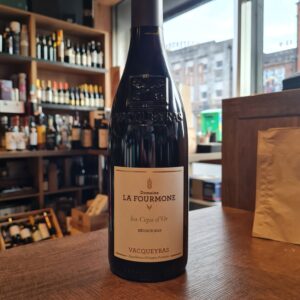 Domaine la Fourmone is a multi-generational domaine and is currently run by sister, Florentine and brother, Albin Combe. The property dates back to the mid-1700’s when it originally producing wheat. Wine began to be grown in the last 19th century and thent became the crop after Julien Combe purchased the property in 1910. The domaine cultivates 41 ha (104 acres) of vineyards of which, 20ha are in Vacqueyras, 10ha are in Gigondas and 7ha of Côtes-du-Rhône and IGP and 4ha of vines on the southern edge of the Dentelles hills that reside in the Ventoux appellation. “Les Ceps d’Or” comes from a blend of mainly Grenache and Mourvèdre. It expresses the imprint of the 50 years of our goblet-pruned vines. The berries are delicately harvested on the northern and eastern limits of the Vacqueyras appellation. The plots come from two islands located on the plateau of the appellation at the foothills of the Dentelles de Montmirail, a massif well known for its geological richness. The first islet is located in the Piedmont de Beauregard region. The soil is made up of dark beige marly silts, cut by broken slabs of Miocene molasses at a depth of one meter. This terroir requires a lot of effort from the vines to slide their rootlets into the cracks and deploy meters of roots. This effort gives the wine a singular complexity and aromatic richness. The second islet is located at the northern limit of the Cône de la Font des Papes terroir. A surface of light beige clay-sandy silt with small limestone fragments with a well-developed root profile up to two meters deep. The materials from this terroir have all the criteria favorable to the vine: freshness and good water reserve.
Domaine la Fourmone is a multi-generational domaine and is currently run by sister, Florentine and brother, Albin Combe. The property dates back to the mid-1700’s when it originally producing wheat. Wine began to be grown in the last 19th century and thent became the crop after Julien Combe purchased the property in 1910. The domaine cultivates 41 ha (104 acres) of vineyards of which, 20ha are in Vacqueyras, 10ha are in Gigondas and 7ha of Côtes-du-Rhône and IGP and 4ha of vines on the southern edge of the Dentelles hills that reside in the Ventoux appellation. “Les Ceps d’Or” comes from a blend of mainly Grenache and Mourvèdre. It expresses the imprint of the 50 years of our goblet-pruned vines. The berries are delicately harvested on the northern and eastern limits of the Vacqueyras appellation. The plots come from two islands located on the plateau of the appellation at the foothills of the Dentelles de Montmirail, a massif well known for its geological richness. The first islet is located in the Piedmont de Beauregard region. The soil is made up of dark beige marly silts, cut by broken slabs of Miocene molasses at a depth of one meter. This terroir requires a lot of effort from the vines to slide their rootlets into the cracks and deploy meters of roots. This effort gives the wine a singular complexity and aromatic richness. The second islet is located at the northern limit of the Cône de la Font des Papes terroir. A surface of light beige clay-sandy silt with small limestone fragments with a well-developed root profile up to two meters deep. The materials from this terroir have all the criteria favorable to the vine: freshness and good water reserve. -
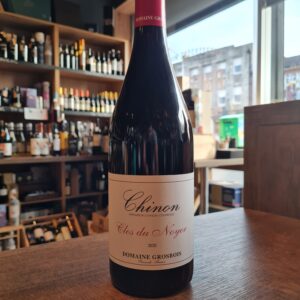 Located on the right bank of the Vienne Valley, between Tours and Saumur, Domaine Grosbois is an old fortified farm built in the 15th century which today covers 20 hectares of vines. Now run by two brothers, Nicolas and Sylvain, the family vineyards are located at a place called “The Pressoir” Panzoult in the Chinon appellation at the heart of the Loire Valley. The winemaking here is concentrated solely on the production of red wines made from the Cabernet Franc grape. Nicolas has been at the domaine since 2005 after returning from ten years working as a travelling winemaker, gaining experience in locations as diverse as the Minervois, Chile, Oregon (Adelsheim), Australia (Brokenwood) and New Zealand (Pegasus Bay). His first vintage was in 2006 where he worked alongside his father, Jacques (who had previously been more inclined to sell off the production in cubitainer). Jacques retired, or at least withdrew, in 2008 allowing Nicolas to develop the domaine in the way he intended to continue, converting to organic and biodynamic viticulture. The winemaking philosophy at Grosbois is centred around the idea of micro-site specificity with the various Cabernet Franc bottling's reflecting the 19 unique plots of vines on the Panzoult Hill, all of which had been strategically planted according to their geological characteristics. Once in the cellar, Nicolas lets the grapes speak for themselves, keeping a light hand at winemaking. He ferments in open concrete tanks with indigenous yeast, uses no oak and minimal filtration, so what you find in the final wine is a pure expression of a teeny parcel of Chinon. Pair it with roast duck with peppers. Serve after slight aeration
Located on the right bank of the Vienne Valley, between Tours and Saumur, Domaine Grosbois is an old fortified farm built in the 15th century which today covers 20 hectares of vines. Now run by two brothers, Nicolas and Sylvain, the family vineyards are located at a place called “The Pressoir” Panzoult in the Chinon appellation at the heart of the Loire Valley. The winemaking here is concentrated solely on the production of red wines made from the Cabernet Franc grape. Nicolas has been at the domaine since 2005 after returning from ten years working as a travelling winemaker, gaining experience in locations as diverse as the Minervois, Chile, Oregon (Adelsheim), Australia (Brokenwood) and New Zealand (Pegasus Bay). His first vintage was in 2006 where he worked alongside his father, Jacques (who had previously been more inclined to sell off the production in cubitainer). Jacques retired, or at least withdrew, in 2008 allowing Nicolas to develop the domaine in the way he intended to continue, converting to organic and biodynamic viticulture. The winemaking philosophy at Grosbois is centred around the idea of micro-site specificity with the various Cabernet Franc bottling's reflecting the 19 unique plots of vines on the Panzoult Hill, all of which had been strategically planted according to their geological characteristics. Once in the cellar, Nicolas lets the grapes speak for themselves, keeping a light hand at winemaking. He ferments in open concrete tanks with indigenous yeast, uses no oak and minimal filtration, so what you find in the final wine is a pure expression of a teeny parcel of Chinon. Pair it with roast duck with peppers. Serve after slight aeration -
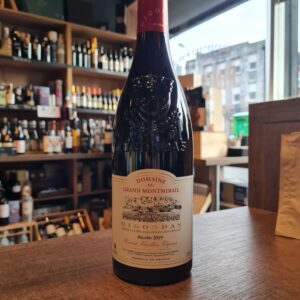 Domaine du Grand Montmirail Gigondas lies in the foothills of a limestone escarpment in a remote part of Gigondas. A blend of Grenache, Syrah and Mourvedre, this wine has real depth of flavour with concentrated black fruits balanced by fresh acidity and a rich warm finish. In Gigondas, cultivating grapes to make wine and olives to make oil stretches back to ancient times. As long ago as the 1st century, Julius Caesar established a colony of veterans on this site. One is said to have been so jovial that he was nicknamed Jucundus, 'the joyful', and his village became known as Jocundatis, which later became Gigondas. Domain du Grand Montmirail covers more than 35 Ha, planted exclusively on the hillsides and terraces located south / south-east side of the Dentelles de Montmirail, forming a superb amphitheater dedicated to the vine and the wine. The altitude of the vineyard varies between 300 and 350 meters and enjoys natural protection against the wind dominating the mistral. The vineyard is composed of Grenache, Syrah and Mourvèdre parcels, aged between 15 and 65 years. The harvest begins with Syrah, the quickest grape to ripen, and then the Grenache in the highest spots. The Mourvèdre is the slowest ripening and usually the last grape to be harvested. The entire harvest is picked by hand, and yields are never more than 35 hl/ha. Among the old vines on the terraces, they generally fall to a maximum of 30 hl/ha. The recently picked grapes are transported quickly to the winery situated off to the side of the vineyards. Pair it with Beef, Casserole, Lamb, Mushrooms
Domaine du Grand Montmirail Gigondas lies in the foothills of a limestone escarpment in a remote part of Gigondas. A blend of Grenache, Syrah and Mourvedre, this wine has real depth of flavour with concentrated black fruits balanced by fresh acidity and a rich warm finish. In Gigondas, cultivating grapes to make wine and olives to make oil stretches back to ancient times. As long ago as the 1st century, Julius Caesar established a colony of veterans on this site. One is said to have been so jovial that he was nicknamed Jucundus, 'the joyful', and his village became known as Jocundatis, which later became Gigondas. Domain du Grand Montmirail covers more than 35 Ha, planted exclusively on the hillsides and terraces located south / south-east side of the Dentelles de Montmirail, forming a superb amphitheater dedicated to the vine and the wine. The altitude of the vineyard varies between 300 and 350 meters and enjoys natural protection against the wind dominating the mistral. The vineyard is composed of Grenache, Syrah and Mourvèdre parcels, aged between 15 and 65 years. The harvest begins with Syrah, the quickest grape to ripen, and then the Grenache in the highest spots. The Mourvèdre is the slowest ripening and usually the last grape to be harvested. The entire harvest is picked by hand, and yields are never more than 35 hl/ha. Among the old vines on the terraces, they generally fall to a maximum of 30 hl/ha. The recently picked grapes are transported quickly to the winery situated off to the side of the vineyards. Pair it with Beef, Casserole, Lamb, Mushrooms -
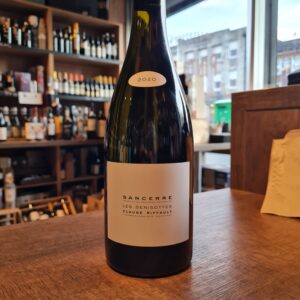 Stéphane Riffault (Claude’s son and now the owner of the estate) is turning out Sancerre bottlings that are the envy of many producers twice his age. As David Schildknecht put it, “Make no mistake: this address in the hamlet of Maison Salle (Sury-en-Vaux) is now one of the five or six most exciting estates in the Sancerre appellation.” Given that Stephane’s holdings represent 4-tenths of 1 percent of the appellation, he is clearly doing something right. Based in the village of Sury-en-Vaux, Stéphane Riffault works 33 different parcels in 8 different lieu-dits spread across four villages. The 13.5 hectares of vines are plowed, and no synthetic material is used. Starting in 2017, the property has been certified organic by ECOCERT and biodynamic by BIODYVIN. Unlike most Sancerre producers, the entire harvest is carried out by hand, and extensive sorting occurs before the grapes are crushed. Stéphane’s wife, Benedicte, leads the harvest team while Stéphane manages the sorting and press during harvest. Most of the domaine’s holdings are planted on the soft limestone soil called terres blanches, with some parcels on calliottes and silex. Minor, judicious uses of oak help to add length to the already precise, site-expressive, and vertical bottlings. All the parcels are vinified separately, and except for the rosé, all the wines are bottled unfiltered. Having studied and worked in Burgundy (and closely with Olivier Leflaive), it’s easy to see the Burgundian influence in Stéphane’s wines. The mastery of minerality standing shoulder–height with the wood is rarely duplicated in Sancerre. Regardless of his parcels’ exposition (many are south-facing), Riffault’s wines are always crisp and highcut with a jeweled delineation that speaks to the precision and attention these wines get. These are not your daddy’s (or his daddy, Claude’s) Sancerres. Sancerre Les Denisottes Les Denisottes comes from a lieu-dit located quite close to the domaine’s cellar. Here the terres blanches soils are deeper and more pebbly than rocky and producing a richer style of Sancerre – one that requires a longer élevage in barrel, and released with a greater capacity to age.
Stéphane Riffault (Claude’s son and now the owner of the estate) is turning out Sancerre bottlings that are the envy of many producers twice his age. As David Schildknecht put it, “Make no mistake: this address in the hamlet of Maison Salle (Sury-en-Vaux) is now one of the five or six most exciting estates in the Sancerre appellation.” Given that Stephane’s holdings represent 4-tenths of 1 percent of the appellation, he is clearly doing something right. Based in the village of Sury-en-Vaux, Stéphane Riffault works 33 different parcels in 8 different lieu-dits spread across four villages. The 13.5 hectares of vines are plowed, and no synthetic material is used. Starting in 2017, the property has been certified organic by ECOCERT and biodynamic by BIODYVIN. Unlike most Sancerre producers, the entire harvest is carried out by hand, and extensive sorting occurs before the grapes are crushed. Stéphane’s wife, Benedicte, leads the harvest team while Stéphane manages the sorting and press during harvest. Most of the domaine’s holdings are planted on the soft limestone soil called terres blanches, with some parcels on calliottes and silex. Minor, judicious uses of oak help to add length to the already precise, site-expressive, and vertical bottlings. All the parcels are vinified separately, and except for the rosé, all the wines are bottled unfiltered. Having studied and worked in Burgundy (and closely with Olivier Leflaive), it’s easy to see the Burgundian influence in Stéphane’s wines. The mastery of minerality standing shoulder–height with the wood is rarely duplicated in Sancerre. Regardless of his parcels’ exposition (many are south-facing), Riffault’s wines are always crisp and highcut with a jeweled delineation that speaks to the precision and attention these wines get. These are not your daddy’s (or his daddy, Claude’s) Sancerres. Sancerre Les Denisottes Les Denisottes comes from a lieu-dit located quite close to the domaine’s cellar. Here the terres blanches soils are deeper and more pebbly than rocky and producing a richer style of Sancerre – one that requires a longer élevage in barrel, and released with a greater capacity to age. -
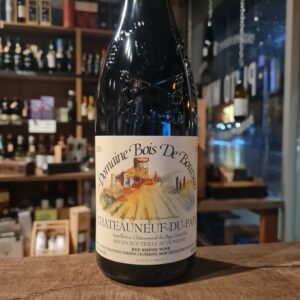 Domaine Bois de Boursan makes exemplary Châteauneuf-du-Pape in the Southern Rhône. This family-run estate was started by the Versino family in 1955, who moved across from Piedmont in Italy. It is now in the hands of Jean-Paul, the third generation at the helm. He takes great pride in continuing to make traditionally-styled reds with the belief that vinifying with stems and ageing the wine for extended periods in large oak foudres gives his wine its unique character. There is nothing flashy or opulent here, just wines with great character. In total, Jean-Paul has 10 hectares spread across 27 different parcels in Châteauneuf-du-Pape, with its changing soil types and vines up to 50 years old.
Domaine Bois de Boursan makes exemplary Châteauneuf-du-Pape in the Southern Rhône. This family-run estate was started by the Versino family in 1955, who moved across from Piedmont in Italy. It is now in the hands of Jean-Paul, the third generation at the helm. He takes great pride in continuing to make traditionally-styled reds with the belief that vinifying with stems and ageing the wine for extended periods in large oak foudres gives his wine its unique character. There is nothing flashy or opulent here, just wines with great character. In total, Jean-Paul has 10 hectares spread across 27 different parcels in Châteauneuf-du-Pape, with its changing soil types and vines up to 50 years old. -
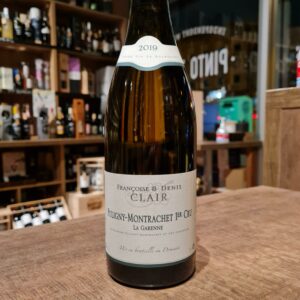 Denis Clair, quick with a laugh and a textbook bon vivant, created the domaine in 1986. The Clair family had owned parcels in the area for generations but sold most of their production to negociants. Denis set out to bottle his own wine. His wife Françoise was born in Saint-Aubin, a neighboring AOC village 2 1/2 miles to the northwest (a bit longer by car). This is where the Clairs' winery is located. They have a son, Jean-Baptiste, who joined the family business in 2000 working the vines. Jean-Baptist eventually began making their white wines. Today the family owns 15 hectares, including parcels in Santenay and Saint-Aubin. They sell 75,000 bottles a year, with about 75% of that going abroad. Fantastic with lobster, langoustines, turbot, a fillet of Saint-Pierre with fine vegetables, all shellfish and crustaceans, sole... Also unique with fine white meats, including pheasant with a beautiful cream sauce. Stunning gift and a bucket list wine
Denis Clair, quick with a laugh and a textbook bon vivant, created the domaine in 1986. The Clair family had owned parcels in the area for generations but sold most of their production to negociants. Denis set out to bottle his own wine. His wife Françoise was born in Saint-Aubin, a neighboring AOC village 2 1/2 miles to the northwest (a bit longer by car). This is where the Clairs' winery is located. They have a son, Jean-Baptiste, who joined the family business in 2000 working the vines. Jean-Baptist eventually began making their white wines. Today the family owns 15 hectares, including parcels in Santenay and Saint-Aubin. They sell 75,000 bottles a year, with about 75% of that going abroad. Fantastic with lobster, langoustines, turbot, a fillet of Saint-Pierre with fine vegetables, all shellfish and crustaceans, sole... Also unique with fine white meats, including pheasant with a beautiful cream sauce. Stunning gift and a bucket list wine -
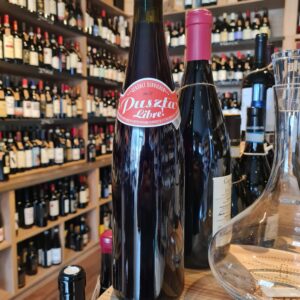 Claus Preisinger made his first wine when he was just 20 years old and quickly expanded the 3 hectares of his family vineyards by the Neusiedlersee lake in Burgenland (Austria) to 19 ha. He is the youngest member of Pannobile, a group created to champion the unique character of Burgenland’s terroir and local varieties, and a promising new Austrian producer. Puszta Libre! comes from vineyards lying on the north shore of Lake Neusiedl on very varied sandy loam soils, with flint, quartz, slate and limestone. Basing his work Rudolf Steiner's biodynamic principles, he maintains the natural balance of the vineyard using only organic and biodynamic practices. Puszta Libre! is a tribute to ancient viticulture both in the way it is made and in the way it is presented. Its design is inspired by classic soft drinks and invites you to drink it cold and without preconceived ideas. Drink slighly chilled and with your mates!
Claus Preisinger made his first wine when he was just 20 years old and quickly expanded the 3 hectares of his family vineyards by the Neusiedlersee lake in Burgenland (Austria) to 19 ha. He is the youngest member of Pannobile, a group created to champion the unique character of Burgenland’s terroir and local varieties, and a promising new Austrian producer. Puszta Libre! comes from vineyards lying on the north shore of Lake Neusiedl on very varied sandy loam soils, with flint, quartz, slate and limestone. Basing his work Rudolf Steiner's biodynamic principles, he maintains the natural balance of the vineyard using only organic and biodynamic practices. Puszta Libre! is a tribute to ancient viticulture both in the way it is made and in the way it is presented. Its design is inspired by classic soft drinks and invites you to drink it cold and without preconceived ideas. Drink slighly chilled and with your mates! -
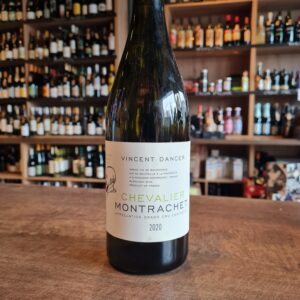
Few winemakers affirm their stellar reputation as convincingly as Vincent Dancer with his ethereal Chevalier Montrachet Grand Cru Blanc 2020. Immaculately crafted in the revered vineyards of France's Burgundy region, it is an unparalleled masterpiece from one of the region's mavericks.
Going against the grain of traditional Burgundian winemaking, Vincent Dancer opts for no battonage and low usage of new oak in producing this Grand Cru Blanc. He relies on sustainable viticulture practices, underscoring nature's ability to produce a near mystical balance of flavours without intervention. This purity of approach culminates in an elegant, nuanced white experienced in this bottle.


